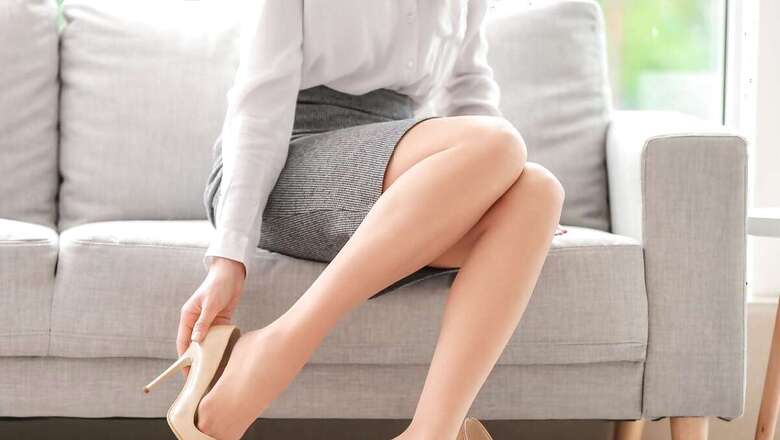
views
High heels are commonly seen as a mark of elegance and sophistication, giving a bit of glitter to any attire. However, many women have expressed concern about their impact on joint health. Balancing the need for attractive footwear with the necessity to keep joints healthy can be difficult, but it is essential for long-term well-being.
Dr. Mayank Pathak, Consultant, Orthopaedics, Manipal Hospital, Kharadi, Pune, says, “Wearing high heels can impact gait and walking biomechanics by shortening strides and increasing hip rotation and pelvic tilt. This puts individuals at risk for some problems, including osteoarthritis, hallux valgus, musculoskeletal pain, and ankle inversion injuries. Abnormalities can happen in the kinetics, gait, posture, balance, knee and hip flexion, and foot and ankle kinematics. A higher pelvic tilt that results in increased lumbar lordosis can increase the risk of low back discomfort.”
Teenagers (10–19 years old) who wear high heels have been shown to have postural abnormalities, which affect how their heads are positioned as well as their backs, pelvis, and knees. Postural alterations and imbalances in the body are mostly caused by the height and width of the heels.
Significant impact on Back, Hip, and Knee
Dr Pathak adds, “The regular C-curve shape of the back is intended to act as a shock absorber, relieving weight-bearing stress on the vertebrae and pelvis. High heels flatten the lumbar spine of the low back, driving the thoracic spine of the mid-back into a hyper-curved position.”
Uneven alignment is bound to cause the back muscles to be overworked, which raises the possibility of developing persistent back discomfort. The hip flexors are placed in the top front of the thighs. Wearing heels keeps them in a constant flexed position.
“Knee osteoarthritis (“wear-and-tear arthritis”) is more common in women than in men. Most of the blame can be attributed to the wearing of high heels. High heels increase the distance between the floor and the knee, resulting in increased knee torque (force of rotation) and compression. The tibia, or shin bone, will bend inward when wearing high heels due to the knee’s constant bent position, partly for balancing reasons. The compression of the medial (inner) knee, a typical location of osteoarthritis, is caused by this changed posture,” explains Dr Pathak.
High heel-induced stress mostly impacts the hips and lower back as well as the knees. Wearing heels can cause pain and discomfort due to muscular imbalances and hip misalignment caused by the incorrect posture that is assumed. It can eventually lead to the development of bursitis and arthritis in the hip joints. High heels also frequently accentuate the lower back’s natural curve, which can cause lower back pain and even long-term spinal issues.
“For joint pain caused by high heels, initial treatments often include rest, physical therapy, and anti-inflammatory medications. If these treatments fail, surgical procedures such as knee arthroscopy, hip replacement, or spinal surgery can be performed to repair or replace damaged joints. Surgery is intended to restore function and relieve discomfort, providing a long-term solution to severe joint injury and enhancing overall quality of life,” opines Dr Pathak.




















Comments
0 comment